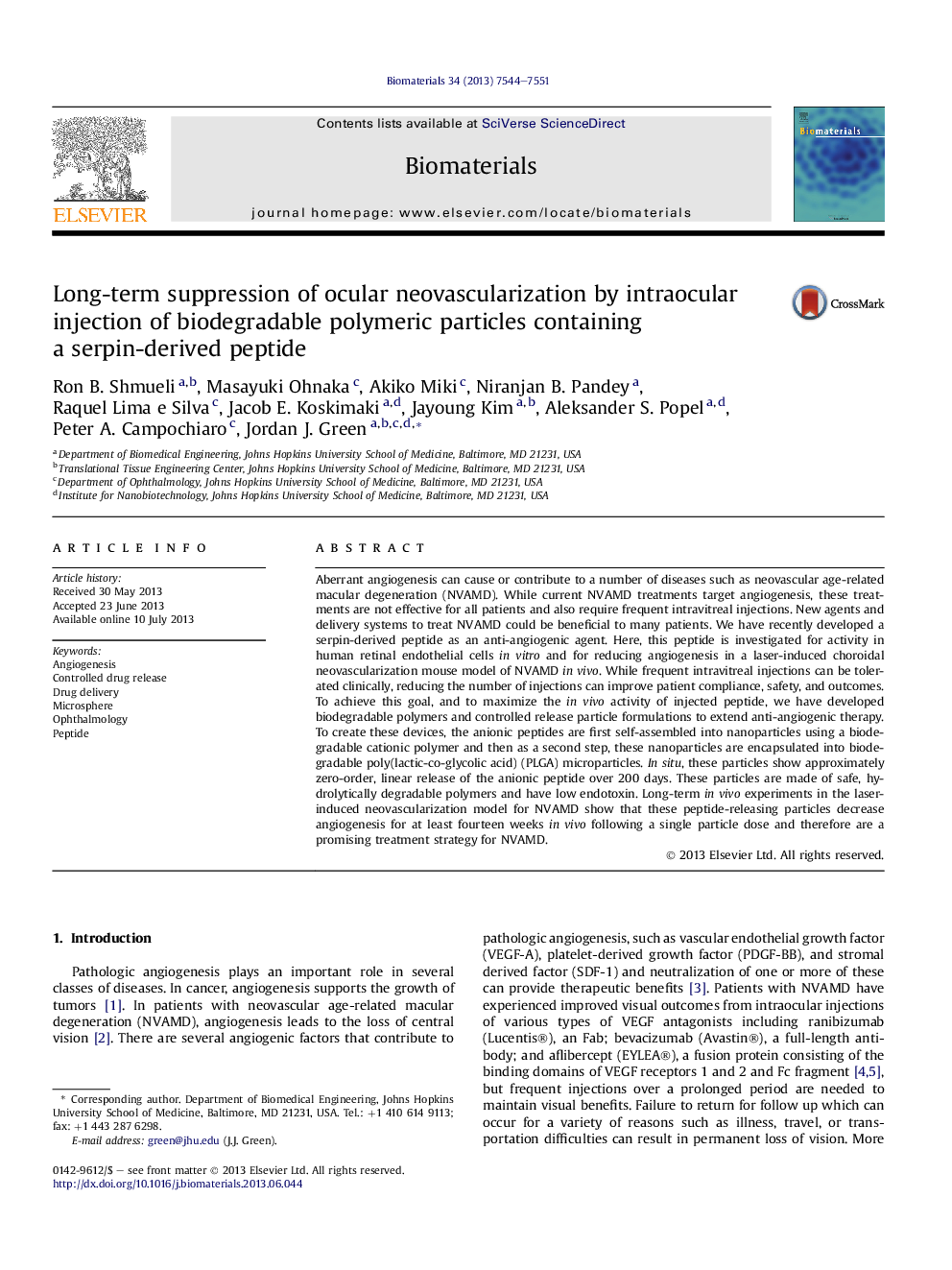| کد مقاله | کد نشریه | سال انتشار | مقاله انگلیسی | نسخه تمام متن |
|---|---|---|---|---|
| 10228727 | 493 | 2013 | 8 صفحه PDF | دانلود رایگان |
عنوان انگلیسی مقاله ISI
Long-term suppression of ocular neovascularization by intraocular injection of biodegradable polymeric particles containing a serpin-derived peptide
دانلود مقاله + سفارش ترجمه
دانلود مقاله ISI انگلیسی
رایگان برای ایرانیان
کلمات کلیدی
موضوعات مرتبط
مهندسی و علوم پایه
مهندسی شیمی
بیو مهندسی (مهندسی زیستی)
پیش نمایش صفحه اول مقاله

چکیده انگلیسی
Aberrant angiogenesis can cause or contribute to a number of diseases such as neovascular age-related macular degeneration (NVAMD). While current NVAMD treatments target angiogenesis, these treatments are not effective for all patients and also require frequent intravitreal injections. New agents and delivery systems to treat NVAMD could be beneficial to many patients. We have recently developed a serpin-derived peptide as an anti-angiogenic agent. Here, this peptide is investigated for activity in human retinal endothelial cells in vitro and for reducing angiogenesis in a laser-induced choroidal neovascularization mouse model of NVAMD in vivo. While frequent intravitreal injections can be tolerated clinically, reducing the number of injections can improve patient compliance, safety, and outcomes. To achieve this goal, and to maximize the in vivo activity of injected peptide, we have developed biodegradable polymers and controlled release particle formulations to extend anti-angiogenic therapy. To create these devices, the anionic peptides are first self-assembled into nanoparticles using a biodegradable cationic polymer and then as a second step, these nanoparticles are encapsulated into biodegradable poly(lactic-co-glycolic acid) (PLGA) microparticles. In situ, these particles show approximately zero-order, linear release of the anionic peptide over 200 days. These particles are made of safe, hydrolytically degradable polymers and have low endotoxin. Long-term in vivo experiments in the laser-induced neovascularization model for NVAMD show that these peptide-releasing particles decrease angiogenesis for at least fourteen weeks in vivo following a single particle dose and therefore are a promising treatment strategy for NVAMD.
ناشر
Database: Elsevier - ScienceDirect (ساینس دایرکت)
Journal: Biomaterials - Volume 34, Issue 30, October 2013, Pages 7544-7551
Journal: Biomaterials - Volume 34, Issue 30, October 2013, Pages 7544-7551
نویسندگان
Ron B. Shmueli, Masayuki Ohnaka, Akiko Miki, Niranjan B. Pandey, Raquel Lima e Silva, Jacob E. Koskimaki, Jayoung Kim, Aleksander S. Popel, Peter A. Campochiaro, Jordan J. Green,